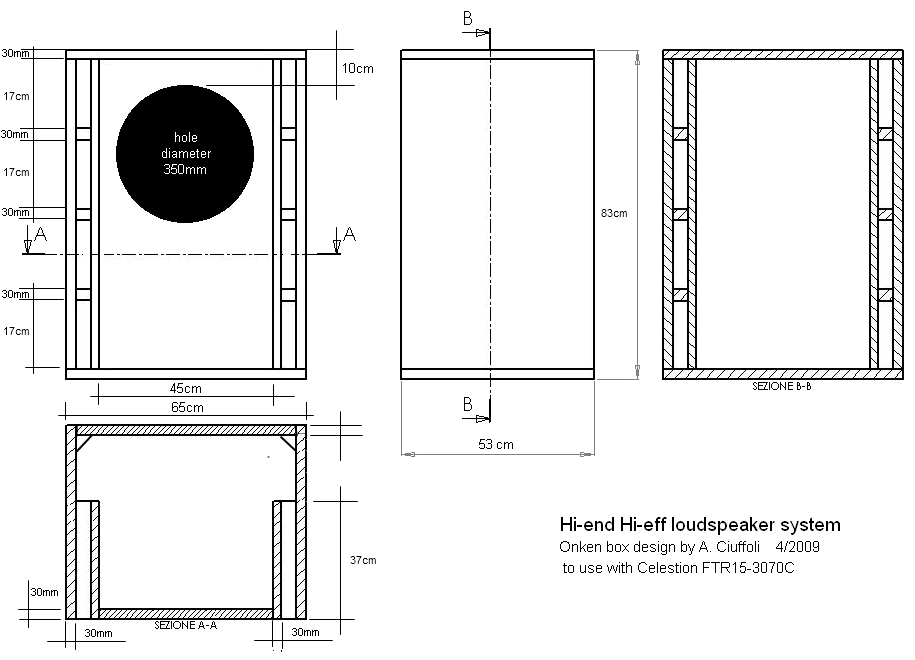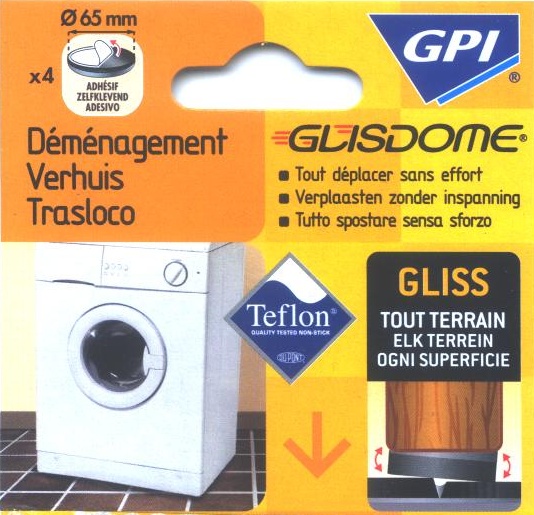This causes that,
being the displacement of each fold very small, the air
moves at great speed, producing an important sound
pressure.
The advantages of this type of tweeter can be summarized
in:
- Radiation
surface four times the one of a tweeter or an equivalent
compression driver, thanks to its folded geometry.
- Mobility transformer of air (Air Motion Transformer)
because it causes in the air a speed four times greater
than the one of the folds themselves (relation 4:1).
- This confers an enormous dynamics and an incredible
transient response, vastly superior to that of any
conventional tweeter, including ribbon tweeters and
compression drivers.
 |
 |
 |
|
|
Hi-Eff 2 loudspeakers
system INTRODUCTION
After the good experience with the first high
efficiency system using a very low budget I have think to increase the sonic
performances with a little more cost. |
 |
HIGH FREQUENCY
 |
There are very few tweeters with an efficiency
near to 100dB and low distortion, these are based on
is based on the AMT technology
(Air Motion Transformer).
The new
TPL150H use a little horn to
increase sensibility and low frequency
range to obtain these following
specifications.
The cost of TPL150H + is about 500 euro each. |
 |
|
 click to enlarge |
|
 |
|
 |
LOW FREQUENCY
In my previous project I have excluded the SM115N
Beyma that is very interesting for
the price and performances.
The
SM115N
incorporates a 3. voice coil made with high quality materials: copper round
wire with high temperature bonding strength and apical former. Moreover, it
features a powerful magnet system with rear air ventilation. All these facts
result in a 15. driver with extended and smooth low-mid frequency response,
reduced harmonic.

If you compare to the
Celestion
FTR15-3070C the
SM115N
Beyma have a lower resonant frequency and a similar extended frequency
range.
 |
 |
In the same volume the SM115N have 6Hz lower so better bass frequency.
Follows the final Onken box design, 2 bass-reflex holes has be closed to use the SM115N but it will be adjust on the final environment.

Follows the measurement of the two drivers without filter in my room.

CROSSOVER
 |
Jantzen Audio Superior Z-cap
Jantzen Audio Z - Superior Caps are high-end components,
delivering a natural, almost holographic soundstage.
I have tested these and compare with my references Solen MKP and Clarity Cap SA range caps. In the article of Tony Gee these get a verdict of 10. www.humblehomemadehifi.com
|
 |
Jantzen
Air Coils To get the lower distortion it is necessary use only air coils inductance with a good wire section |
I have used stainless steel and not iron to fix the 3 choke.
The following measurements are valid only
at medium-high frequency and has been created using the box of version 1
with 2 bass reflex hole closed.
Note: not all the measurements are in the same environment conditions.
 |
 |
 The sound is good but the impedance have a min of 2ohm at 1KHz that is not very good for single ended amplifier with Rout about 2-3ohm |

|

The TPL150H is a pure resistive load so it is very easy simulate the filter. Here the plot of both last versions, 2 in red and 3 in green. The Beyma declare 80W above 1KHz with a 12dB/oct filter so with a simple first order filter it will be reduced but it is compensated by the attenuation of 7dB.
|

|
 |

|
 |
Same frequency response of the previous but a
very good linear impedance
|
 Here the filter has been optimized with Arta software, EMU 0404 USB and ECM8000 analizing an MLS impulse for 50msec and after a listen test. All capacitors are Z-Cap, the cheap Solen has been used only in the impedance correction cell. |
 A different microphone position
Follows a near field measurement (15cm in front of each driver)
Follows the impedance measurement with Clio system
|
SOUND
The two versions are very different, the first is more aggressive but it
give good result with jazz creating a strong feeling of live listening.
The voices in the first version are a little bit compromised by the
compression driver and in some moments these seems to come from a pipe (the
horn).
The second version can be used to ear any kind of music like a normal low
efficiency loudspeakers because the sound is very natural without
colorations.
Also the bass frequency in the second release is more dry but it can be
confused like a less impact.
Using single ended amplifier is very important have a constant impedance
because these amplifiers have a very low damping factor.
The filter version 5 sound much better than the previous when I drive these
loudspeakers with my
813
amplifier with output impedance near to 1.6ohm.
COST
| version 1 both channels (price in euro) | version 2 both channels (price in euro) | ||
| CP380 | 320 | TPL150H | 1000 |
| 1" HORN | 160 | HORN | - |
| FTR15-3070C | 300 | SM115N | 280 |
| Crossover | 150 | Crossover | 300 |
| Wood | 300 | Wood | 300 |
| Cut | 250 | Cut | 300 |
| damping materials | 70 | damping materials | 70 |
| total | 1550 | total | 2250 |








 Same
Same





